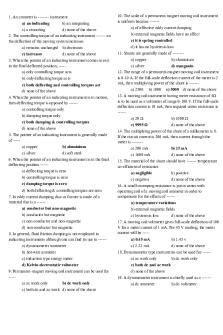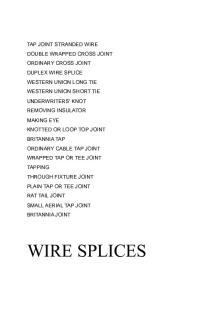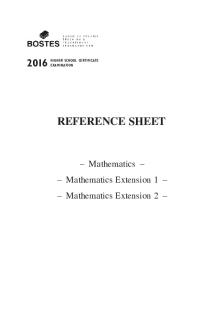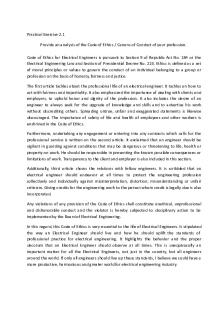BEEE - Reference books for Electrical & Electronics Engineering PDF

| Title | BEEE - Reference books for Electrical & Electronics Engineering |
|---|---|
| Author | Shan muga |
| Course | Electric machines |
| Institution | Birla Institute of Technology and Science, Pilani |
| Pages | 103 |
| File Size | 5.7 MB |
| File Type | |
| Total Downloads | 89 |
| Total Views | 167 |
Summary
Reference books for Electrical & Electronics Engineering...
Description
BASIC ELECTRICAL ENGINEERING
V.HimaBindu V.V.S Madhuri Chandrashekar.D
GOKARAJU RANGARAJU INSTITUTE OF ENGINEERING AND TECHNOLOGY (Autonomous)
Index: 1. Syllabus……………………………………………….……….. .1 2. Ohm’s Law………………………………………….…………..3 3. KVL,KCL…………………………………………….……….. .4 4. Nodes,Branches& Loops…………………….……….………. 5 5. Series elements & Voltage Division………..………….……….6 6. Parallel elements & Current Division……………….………...7 7. Star-Delta transformation…………………………….………..8 8. Independent Sources …………………………………..……….9 9. Dependent sources……………………………………………12 10. Source Transformation:…………………………………….…13 11. Review of Complex Number…………………………………..16 12. Phasor Representation:………………….…………………….19 13. Phasor Relationship with a pure resistance……………..……23 14. Phasor Relationship with a pure inductance………………....24 15. Phasor Relationship with a pure capacitance………..……….25 16. Series and Parallel combinations of Inductors………….……30 17. Series and parallel connection of capacitors……………...…..32 18. Mesh Analysis…………………………………………………..34 19. Nodal Analysis……………………………………………….…37 20. Average, RMS values……………….……………………….....43 21. R-L Series Circuit……………………………………………...47 22. R-C Series circuit……………………………………………....50 23. R-L-C Series circuit…………………………………………....53 24. Real, reactive & Apparent Power…………………………….56 25. Power triangle……………………………………………….....61 26. Series Resonance……………………………………………….66 27. Parallel Resonance……………………………………………..69 28. Thevenin’s Theorem…………………………………………...72 29. Norton’s Theorem……………………………………………...75 30. Superposition Theorem………………………………………..79 31. Maximum Power Transfer Theorem………………………....82 32. Reciprocity Theorem…………………………………………..84 33. Single Phase Transformer……………………………………..88
34. Single Phase Induction Motor…………………………………95 35. DC Motor……………………………………………………….97
GOKARAJU RANGARAJU INSTITUTE OF ENGG AND TECHNOLOGY (AUTONOMOUS) ACADEMIC YEAR 2014-15, Semester-I/II BASIC ELECTRICAL ENGINEERING (BEE) Sub code:
GR14 Regulation
L T P C 3
2
0 4
PreRequities : Fundamental in Engineering Mathematics and Physics Course Objectives: BEE (Basic Electric Engineering) is common to first year branches of UG Engineering(expect BT). At the end of the course the student is expected to 1. Know the fundamental of Electrical Engineering and practical. 2. Practical implementation of fundamental theory concepts. Course Outcomes : 1. Students will learn strong basics of Electrical Engineering and practical implementation of Electrical fundamentals. 2. Students will learn different applications of commonly used electrical machinery UNIT 1: Basic Laws: Ohm’s law, Kirchhoff’s voltage and current laws, Nodes-Branches and loops, Series elements and Voltage Division, Parallel elements and Current Division, Star-Delta transformation, Independent sources and Dependent sources, source transformation. UNIT 2: AC Fundamentals-I: Reviews of Complex Algebra, Sinusoids, phasors, Phasor Relations of circuit elements, Impedance and admittance, Impedance Combinations, Series and Parallel combination of Inductors and capacitor, Mesh analysis and Nodal analysis . UNIT 3: AC Fundamental-II: RMS and average values, Form factors, Steady state Analysis of series, Parallel and Series Parallel combination of R,L,C with Sinusoidal excitation, Instantaneous power, Real power, Reactive power and Apparent power, concept of Power factor, Frequency. UNIT 4: Network Theorems and Resonance: Superposition theorem, Thevinin’s theorem, Nortorn’s theorem, Maximum Power Transfer Theorem, Reciprocity theorem, Resonance in Electrical circuits: Analysis of series and parallel Resonance. UNIT 5: Fundamentals of Electrical Machines: Construction, Principle, Operation and Application of –(i) Single phase Transformer (ii) Single phase Induction motor (iii) DC Motor.
TEXTBOOK: 1. Fundamentals of Electrical Circuits by Charles k.Alexander, Mattew N.O.Saidiku, Tata McGraw Hill company.
Reference Book: 1.Circuit theory(Analysis and Synthesis) by A. Chakrabarti-Dhanpat Rai&Co. 2.Network Theory by Prof.B.N.Yoganarasimham. 3. Circuit Theory by Sudhakar and ShyamMohan. 4.Electrical Machines-I by B.I.Theraja.
UNIT 1: Basic Laws: Ohm’s law, Kirchhoff’s voltage and current laws, Nodes-Branches and loops, Series elements and Voltage Division, Parallel elements and Current Division, Star-Delta transformation, Independent sources and Dependent sources, source transformation.
OHM’S LAW At constant temperature, the current flowing through a conductor is directly proportional to the potential difference(p.d) in volts across the two ends of the given conductor and inversely proportional to the resistance (R) in ohms (Ω) between the ends of the same conductor. µ
µ /
In all practical problems of electrical calculations, it is assumed that the temperature rise is within limits, so that electrical properties such as insulation and conduction properties of the . ℎ’ ℎ = / = = / =
=
A
Solved Examples: 1. An electrical iron carrying 2A at 120V. Find resistance of the device? Soln :
= (/) = 120/2 = 60
2. The essential component of a toaster is an electrical element (a resistor) that converts electrical energy to heat energy. How much current is drawn by a toaster with resistance 12 at 110V? Soln:
9.167 A
3. In the given circuit, calculate current I, the conductance G and the power P?
Soln:
i=
= 6mA
G = = 0.2m mhos P = VI = I R = 180mW
4. A voltage source of 20Sinπt V is connected across a 5KΩ resistor. Find the current through the resistor and power dissipated. Soln:
= = 4( ) , = = 80 () .
5. A resistor absorbs an instantaneous power of 20Cos2t mW when connected to a voltage source V=10Cost V. Find I and R. Soln:
I = 2Cos(t) mA
R = 5KΩ.
KIRCHOFF’S CURRENT AND VOLTAGE LAWS ( KCL and KVL) KIRCHOFF’S CURRENT LAW : KCL states that the total current entering a junction is equal to the total current leaving the junction. (or) The algebraic sum of the currents at the junction (node) will be zero. At node n, Or
(2 + 3 + 4) = (1 + 6 + 5)
2 + 3 + 4 − 1 − 6 − 5 = 0.
KIRCHOFF’S VOLTAGE LAW: KVL is based on the law of the law of conservation of the energy, states that the algebraic sum of voltage drops in a closed loop is zero.
1 + 2 + 3 = 1 + 2 + 3 – = 0 {Flow of currents in loop is assumed +ve from higher potential to lower potential in elements and +ve from lower to higher potential in Sources} Problem: 1. Write KCL and KVL equations for the given circuits:
2. Find the current measured in galvanometer shown in the wheatstone’s bridge. Soln:
0.015625 A (C to A)
3. Determine the voltage across 1Ω resistor in the given circuit. Soln:
2.353 V
4. 5. From the given circuit, find the voltage across ab, cb, and db. Soln:
= 37.5 = 0 = −62.5
NODES, BRANCHES AND LOOPS: Network is an interconnection of elements or devices, circuit is a network providing one or more closed paths. A BRANCH represents a single element such as voltage source or a resistor. A NODE is the point of connection of two or more branches. A LOOP is any closed path in a circuit. A network with ‘b’ branches, ‘l’ loops and ‘n’ nodes should satisfy the theorem of n/w topology. = + – 1 Solved examples: 1. Determine the number of branches and nodes in the circuit shown. Identify which elements are in series and which are in parallel.
Soln: Branches 4; Nodes 3: 10V source and 5Ω resistance are connected in series. The combination is in parallel with 6Ω resistance and 2A source.
2. A bulb rated 110V , 60W has to be operated from a 230V supply. Show the arrangement. Soln: =
= 0.5454;
= 120/ = 220.02Ω
3. A 50Ω and a 100Ω rheostats are each rated at 100W. What is the maximum voltage that may be applied without causing overheating of either rheostat (i) when they are connected in series and (ii) when they are in parallel. Soln: SERIES ELEMENTS AND VOLTAGE DIVISION Two or more elements are in series if they are cascaded or connected sequentially and consequently carry the same current. The equivalent resistances of any number of resistors connected in series is the sum of the individual resistances.
Three resistances R1,R2,R3 are connected in series. The current passing through all the elements connected in series is same, I. In the above figure1, according to KVL, sum of voltage drops in a closed loop is zero. – – – = 0
( , , are drop across , , )
= + + = ( + + )……………………(1) In figure2,
=
………………………….(2)
From equations (1) and (2) = + + Therefore voltage applied divides across the series connected elements. Applications of Series Circuits : 1. Decorative serial sets, number of bulbs with low voltage ratings connected in series across existing rated voltage. 2. Voltage distribution or tapping.
Solved Examples: 1. Find for the given circuit. Soln : 14.4Ω 2. Find and in the given circuit. Calculate the power dissipated in 3Ω. Soln : = 3.33, = 4,
= 5.33.
3. Find , , , and power dissipated in 12Ω and 40Ω. Soln : = 5, = 10 , = 416.7 , = 250 ,
= 2.083 , = 2.5.
PARALLEL ELEMENTS AND CURRENT DIVISION Two or more elements are in parallel if they are connected to the same two nodes and consequently have the same voltage across them. The parallel connected elements have the same voltage across them.
= = ……………………………(1) From KCL, at node A, = + …………….(2) From (1) , = /
+
/
/ = 1/ + 1/
or
= ( )/( + )
The equivalent resistance of the parallel resistors is equal to the product of their resistances divided by their sum. = +
G : conductance
The equivalent conductance connected in parallel is the sum of their individual conductances.
From (2) ,
= – = (
−
)
( )/ = ( )/( ( + ) Therefore = ( )/( + )
and
2 = ( )/( + )
Solved Examples: 1. Two batteries of 24V and 20V with internal resistances of 0.4Ω and 0.25Ω respectively are connected in parallel across a load of 4Ω. Calculate (i) the current supplied by each battery and (ii) voltage across the load. Soln: 8.1482A and -2.963A , 20.741V. 2. Two coils are connected in parallel and a voltage of 200V is applied to the terminals. The total current taken is 25A and the power dissipated in one of the coils is 1500W. What is the resistance of each coil? Soln: 26.67Ω
and
11.43Ω
3. Three impedances = (5 + 5)Ω , = −8Ω and = 4Ω are connected in series to an unknown voltage source V. find I and V, if the voltage drop across is 63.2∟18.45°. Soln:
= + + = 9.487∟ − 18.434° Ω I = 15.8∟18.45°A
V= 150∟0°V.
STAR – DELTA TRANSFORMATION Star connection and delta connection are the two different methods of connecting three basic elements which cannot be further simplified into series or parallel.
The two ways of representation can have equivalent circuits in either form. Assume some voltage source across the terminals AB. = +
= ( + )/( + + ) Therefore + = ( + )/( + + )…………(1) Similarly
+ = ( + )/( + + )…………(2) + = ( + )/( + + )…………..(3)
Subtracting (2) from (1) and adding to (3) ,
=
/( + + )…………….(4)
=
/( + + )…………….(5)
=
/( + + )…………….(6)
A delta connection of can be replaced by an equvivalent star connection with the values from equations (4),(5),(6). Multiply (4)(5) ; (5)(6) ; (4)(6) and then adding the three we get, + +
= /( + + )
Dividing LHS by gives , by gives , by gives .
=
( + + ) /
=
( + + ) /
=
( + + ) /
Solved Examples : 1. Obtain the star connected equivalent for the given delta circuit. Soln :
2. For the bridge network shown, determine the total resistance seen from
the
terminals
AB
using
star-delta
transformation. Soln:
1.182Ω
3. Calculate the voltage across AB in the network and indicate the polarity of the voltage using star-delta conversion. Soln:
4. Determine the equivalent resistance Req. Soln: 4.93Ω INDEPENDENT SOURCES AND DEPENDENT SOURCES An ideal voltage source is one which maintains a constant voltage at its terminals, irrespective of the current delivered to the network.
Practically a voltage sources has internal resistances and hence, when it delivers a current, there is always an internal voltage drop which increases as the supplies more and more current. Thus its terminals voltage progressively falls. Ideal Voltage Source
Practical Voltage Source
An IDEAL CURRENT SOURCE is one which delivers a current of constant magnitude, totally independent of the external network connected. In practical, no current source can be ideal, practical current source is always shown with resistance in parallel. Ideal Current Source
Practical Current Source
Solved Examples: 1. In the given circuit, determine all branch currents. Soln : = 0.222
and = 0.888.
2. For the given circuit, find , , , , . Soln : = 0.0196A ; = 0.01225A ; = 0.00735A ; = 0.0196A and = 0.098V. 3. In the given circuit, find voltage across 4Ω using nodal analysis. = 0.01V.
Soln:
DEPENDENT OR CONTROLLED SOURCES: In some network, in which some of the voltage sources or current sources are controlled by changing of current or voltage elsewhere in the circuit. Such sources are termed as “Dependent or Controlled sources”. There are four types of dependent sources.
Dependent Voltage Source(DVS)
CDVS( Current DVS)
CDCS(Current DCS)
VDVS(Voltage DVS)
VDCS(Voltage DCS)
Dependent Current Source(DCS)
SOURCE TRANSFORMATION: A practical voltage source can be replaced by a current source and vice versa. This can be established if an equivalence between a voltage source and a current source.
= – = –
Or
since
=
= ( – )/ ………..(1)
For Current source ,
= + /
Comparing (1) and (2) ,
= / .
or = − /
A voltage source with resistance in series with its equivalent to a current source = / , in parallel with resistance . Example : Obtain the equivalent voltage source for the current source as shown in figure.
= 10 and = 20Ω
, = 200.
EXERCISE PROBLEMS
1. Two batteries of 24V and 20V with internal resistances of 0.4Ω and 0.25Ω respectively are connected in parallel across a load of 4Ω. Calculate (i) the current supplied by each battery and (ii) voltage across the load. (Soln: 8.1482A , -2.963A , 20.741V) 2. A resistance R is connected in series with a parallel circuit comprising of resistances of 4Ω and 6Ω respectively. When the applied voltage is 15V, the power dissipated in 4Ω resistor is 36W, calculate R. (Soln : 0.6Ω)
3. In the circuit shown, find current through RL using Kirchhoff’s laws. (Soln : 30.488A)
4. Find using KCL, the current through the 6Ω resistor of the circuit shown. (Soln : 0.641A flowing from A to B)
5. Find current through 10Ω resistor
in the given circuit, use
nodal analysis.
6. Determine the current in 10Ω resistor in the network shown , use star-delta conversion.
7. For the 100Ω potentiometer shown, find the resistance R for a load current of 10A.
8. The resistance of two wires is 15Ω when connected in series and 7Ω when connected in parallel, find the resistances of each one.
9. Find the equivalent resistance across the battery terminals with (a) Switch S open (b) Switch S closed.
10. In the given circuit, find the value of V2 that will cause the voltage across 20Ω to be zero by using mesh analysis.
Unit II: AC Fundamentals-I: Review of Complex Algebra, Sinusoids, Phasors, Phasor Relations of Circuit elements, Impedance and Admittance, Impedance Combination, Series and Parallel combination of Inductors and Capacitors, Mesh analysis and Nodal Analysis.
Review of Complex Number:
In order to analyze AC circuit, it is necessary to represent multi-dimensional quantities. In order to accomplish this task, scalar numbers were abandoned and complete numbers were used to express the two dimensions of frequency and phase shift at one time In mathematics, ‘i’ is used to represent imaginary numbers. In the study of electricity and electronics, j is used to represent imaginary numbers so that there is no confusion with I, which in electronics represents current (i). It is also customary for scientist to write the complex number in the form of + . 1. A complex number may be written in Rectangular form as: = + . Where = ( ) is real and = ( ) is imaginary number. = (/). 2. A second way of representing the complex number is by specifying the magnitude(r) and angle (θ) in polar form = ∠ ; = √ + ; = (/). 3. The third way of representing the complex number is the Exponential form.
= , = tan ( ) , = √ + Mathematical Operations of Complex Numbers: Assume = + ∠ 1 and = + ∠2 are two complex numbers, : + = ( + ) + ( + ) : − = ( − ) + ( − )
: = ∠(1 + 2) : / = ( / )∠(1 − 2) : 1/ = (1/ )∠ − 1
Square root: = ∠
2
: ∗ = − = √ ∠ =
Explain Generation of Sinusoidal wave? Generation of sinusoidal AC voltage Consider a rectangular coil of N turns placed in a uniform magnetic field as shown in the figure. The coil is rotating in the anticlockwise direction at an uniform angular velocity of ω rad/sec.
When the coil is in the vertical position, the flux linking the coil is zero because the plane of the coil is parallel to the direction of the magnetic field. Hence at this position, the emf induced in the coil is zero. When the coil moves by some angle in the anticlockwise direction, there is a rate of change of flux linking the coil and hence an emf is induced in the coil according...
Similar Free PDFs

Basics electronics for electrical wiring
- 152 Pages

Electrical and Electronics Measurment
- 652 Pages
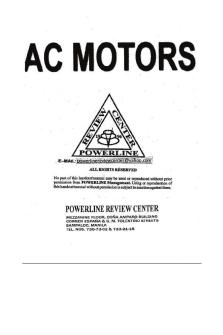
AC Motors101 Electrical Engineering
- 17 Pages

Electrical engineering - Wikipedia
- 18 Pages
Popular Institutions
- Tinajero National High School - Annex
- Politeknik Caltex Riau
- Yokohama City University
- SGT University
- University of Al-Qadisiyah
- Divine Word College of Vigan
- Techniek College Rotterdam
- Universidade de Santiago
- Universiti Teknologi MARA Cawangan Johor Kampus Pasir Gudang
- Poltekkes Kemenkes Yogyakarta
- Baguio City National High School
- Colegio san marcos
- preparatoria uno
- Centro de Bachillerato Tecnológico Industrial y de Servicios No. 107
- Dalian Maritime University
- Quang Trung Secondary School
- Colegio Tecnológico en Informática
- Corporación Regional de Educación Superior
- Grupo CEDVA
- Dar Al Uloom University
- Centro de Estudios Preuniversitarios de la Universidad Nacional de Ingeniería
- 上智大学
- Aakash International School, Nuna Majara
- San Felipe Neri Catholic School
- Kang Chiao International School - New Taipei City
- Misamis Occidental National High School
- Institución Educativa Escuela Normal Juan Ladrilleros
- Kolehiyo ng Pantukan
- Batanes State College
- Instituto Continental
- Sekolah Menengah Kejuruan Kesehatan Kaltara (Tarakan)
- Colegio de La Inmaculada Concepcion - Cebu



